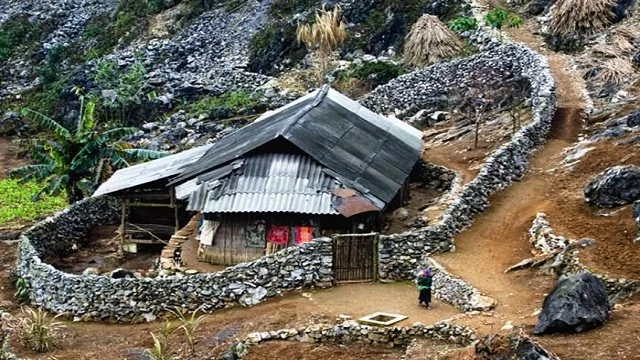Stone fences
On the Dong Van Karst Plateau, amidst the endless gray rocky mountains, the sturdy stone fences have become an inseparable part of local life.
 |
| Illustration image. |
Not only do boundaries drive fields or protect houses, but also the fences carry deep cultural significance, reflecting the ingenuity, resilience, and close bond between people and the harsh natural environment.
What makes the stone fences unique is that they are built entirely by hand, without any binding materials. The H’Mong people carefully select stones and then meticulously fit each one together so the wall can withstand wind, rain, and even bitterly cold winters. Over time, the stones and soil blend, making the fences even stronger.
For the locals, stone fences not only safeguard crops and livestock but also symbolize prosperity and long-lasting unity.
Today, despite the pace of modern life, stone fences are still preserved as a traditional cultural feature. In some areas, they are even highlighted as part of community-based tourism development. Many homestays and cultural villages skillfully maintain these ancient stone fences, allowing visitors to fully experience the rustic strength and endurance of the highland people.
Stone fences are not merely simple labor structures - they are living proof of the vitality and determination of the inhabitants of this rugged plateau. They stand as a vibrant cultural marker, contributing to the unique identity of Vietnam’s northernmost land.
Hai Dang





READER COMMENTS